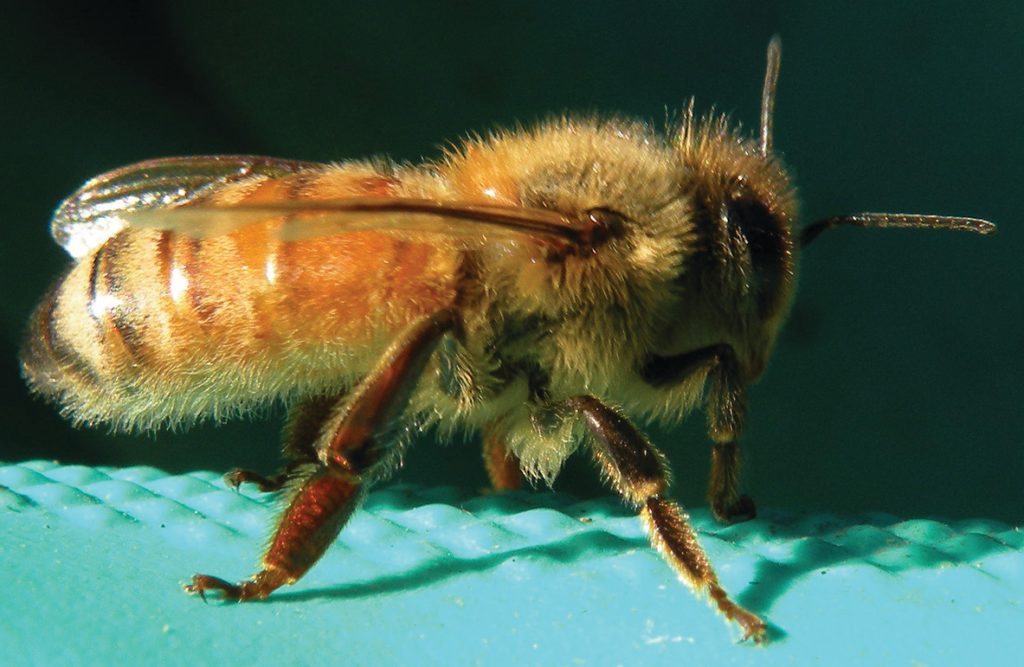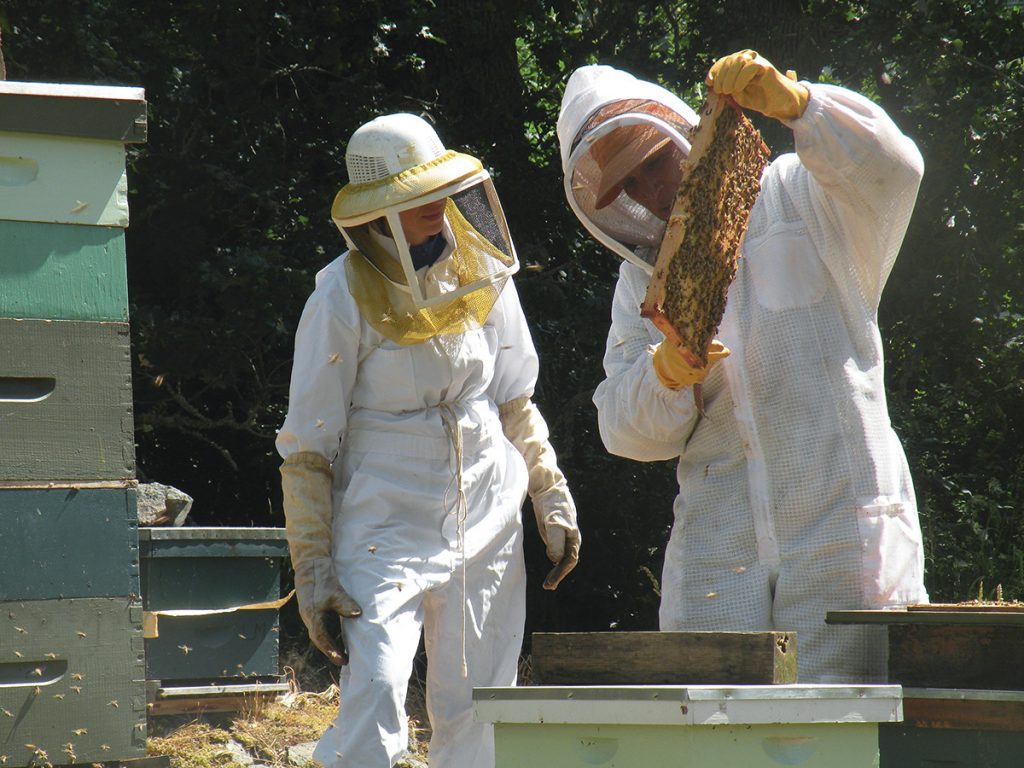In 2006 the highly publicized sudden loss of thousands of honey bee colonies, dubbed “colony collapse disorder,” resulted in great concern over the health of bees. Many students are justifiably concerned; after all, we rely on bees and other insects to pollinate many of the plants we eat.

Since 2006, numbers of managed honey bee colonies have actually increased slightly but, because of some recently introduced parasites and diseases, wild honey bees are becoming very rare in North America. Some native bees, notably certain species of bumble bees, are also declining in number and may even have gone extinct.
Unfortunately, nobody really knows the extent of these bee losses. At this time we do not have good data on most of the 800 or so species of bees native to Canada so we have no way of knowing if their populations are decreasing. It seems likely, however, that they would be subject to the negative pressures of current industrial agricultural methods which have resulted in habitat loss, overuse of pesticides and lack of nectar and pollen diversity. Climate change and pathogens migrating from managed bees might also be affecting native bees.
Students’ interest in and concern about bees and pollination can serve as an introduction to a great variety of topics. Inviting guest beekeepers to talk to classes would benefit students. Passionate speakers enlighten both teachers and students and help them understand the fascinating life of bees, the role of bees in ecosystems and the knowledge that people need to ensure healthy bee populations.
Nairn Hollott, member of the Capital Region Beekeepers’ Association in Victoria, BC likes to explain the importance of bees and why we keep talking about them to young people. She states, “I visit schools and day programs gearing my talks to their level. For the youngsters I note that it is not only the flowers that bees pollinate, but also our fruits, vegetables and spices to provide the seeds. For the older grades, discussions can revolve around a bee’s social structure and communication, pollination and how plants attract bees, a honeycomb’s amazing hexagon architecture with its most economical shape, the diversity of food for bees as well as honey flavours and health benefits.”
Most species of bees are solitary; they do not build communal nests and do not cooperate to find food and raise their young. Instead, each female builds its own nest which, depending on the species of bee, could be in the ground, a hollow stem or other natural hollow. Solitary bees do not produce wax so do not build the well-known honeycomb and do not store honey. They do, however, collect pollen to feed their young but, unlike honey bees, most do not have special structures on their legs to carry the pollen. This means that each time they visit a flower they lose more pollen than do honey bees, thus making them more efficient pollinators.

The extraordinary life of honey bees is a marvel of nature and well worth exploring. Honey bees are social and communicative and work as a team for the well-being of the hive. Of the thousands of bees in a honey bee colony, only one, the queen, lays eggs. In the summer she can lay 2,000 eggs a day. Those eggs hatch into white, legless larvae. Caring for them is one of the jobs of young adult bees. They also feed and attend the queen, build comb out of wax secreted from special glands in their bodies, clean and guard the hive, help ventilate the hive by beating their wings and make honey from nectar collected by older field bees. When a colony is large, has lots of stored food, and is becoming crowded, the worker bees will start raising a new queen by feeding a few developing larvae a diet of royal jelly that they excrete from special glands in their mouths. When these specially-fed larvae are close to adulthood, the old queen will leave the hive along with a few thousand workers for a temporary resting spot. From there, individual scout bees search for a suitable new home. After these bees report back with their discoveries, other bees determine the suitability of these locations. When a consensus is reached on the best site, the bees relocate together.
Bumble bees also live in colonies, but unlike honey bees, their colonies only survive for one summer. In the winter the old queen and worker bumble bees die and only the newly hatched and mated queens survive the winter to start new nests in the spring. When students understand the life of our hard-working pollinating friends, they can help protect them. In addition to informing parents about avoiding the use of chemicals in their yards, they can try to implement the following ideas:
- Leave areas of bare soil and old stems in their gardens for solitary bee nesting sites.
- Provide shallow dishes of water with stones protruding for bees to stand on while they drink.
- Make backyard “bee hotels” as nesting places for solitary bees.
- Plant patches of bee-friendly flowers to offer nectar and pollen for bees.
- Ask local councillors to make their town a Bee City (beecitycanada.org/).
- Buy organic produce whenever possible.
- Think of dandelions as food for the bees.
- Support neighbourhood beekeepers by buying local honey.
Bees, beekeeping and pollination are fascinating topics of interest to most students. As pollination is vital to our very survival, both teachers and students will be inspired to keep the issue alive with class projects. Why not contact your local bee club or beekeeper and invite them to talk to your class?
Related Links
How to create a bee-friendly garden from the David Suzuki foundation: davidsuzuki.org/what-you-can-do/food-and-our-planet/create-a-bee-friendly-garden/
How to make and manage a bee hotel: foxleas.com/make-a-bee-hotel.asp
Capital Region Beekeepers Association in Victoria BC: capitalregionbeekeepers.ca
Primarily about bees in California with lots of general information of interest to Canadians: helpabee.org
Good information on many different species of bees and on conservation: xerces.org/bees/
Wasp, hornet, bee nest prevention and removal guide: https://www.ezhomesearch.com/bee-wasp-hornet-guide/
Larraine Roulston
Larraine Roulston just published her 6th book entitled Pee Wee Meets the Pollinators in the children’s book series Pee Wee at Castle Compost. castlecompost.com.
Bob Lucy
Bob Lucy is a biologist, beekeeper and member of the Capital Region Beekeepers’ Association in Victoria, BC.
This article is from Canadian Teacher Magazine’s Apr/May 2017 issue.
